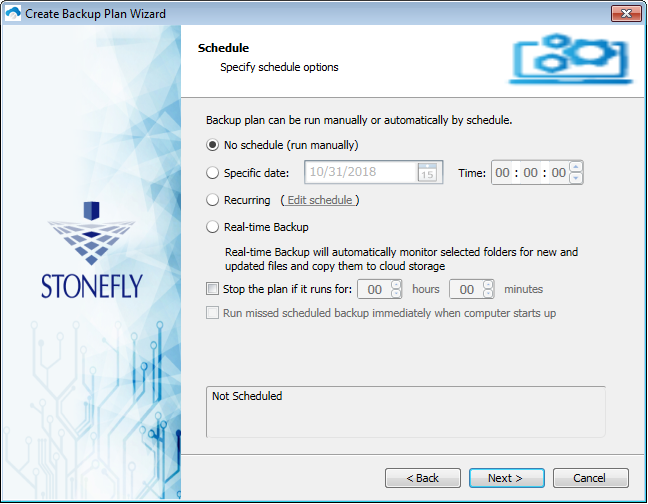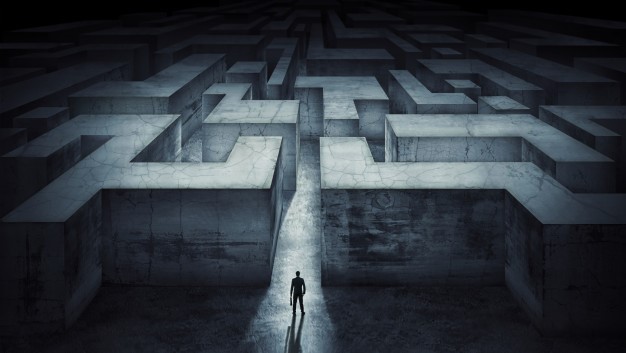The undisruptive flow of data is crucial for the digitally transformed organizations and businesses of today. Loss of access and loss of data is becoming intolerable in today’s competitive market. But how can businesses ensure high availability, prevent data loss, and restore operations in the event of a disaster within minutes?
What are the challenges data owners have to face when setting up disaster recovery and how can they overcome them? This is the question we’ll be tackling in this article.
Disaster Recovery Challenges
First let’s talk about the Disaster Recovery challenges.
1. Disasters Are Inevitable
It’s not if you’re going to have a disaster, it’s when are you going to have a disaster. Reality is that organizations face disasters whether they are as small as smoke alarms or as big as earthquakes. But these make up only 3% of the causes of downtime. So the chances of organizations going down because of natural disasters are very low. It’s a very small number of occurrences really that the organizations are most likely to get hit with a single occurrence whether it be your data center or your network attacked by ransomware.
However, Server crashes are the most likely types of disasters and unfortunately for most organizations clients are actually less forgiving on those type of events when you’re not prepared.
Oftentimes, you can get a little sympathy when it’s this big disaster. They understand everybody’s been impacted but when it’s just a single site or if it’s just you and you haven’t prepared for it, what we found is clients were definitely less forgiving in that type of a situation.
2. The Cost of a Disaster – Can Your Bare It?
With disaster recovery, you have to look at not only, will you have a disaster but what’s the real cost and are you prepared for it?
You’ll find that there’s been numerous studies out there but one according to Gartner is that three out of five companies that experience a catastrophic or prolonged outage will be out of business within two years. This is particular true for Small and Medium sized Businesses (SMBs) and Small and Medium size Enterprises (SMEs).
The concerning part about all that, when you look at the surveys of those small businesses, only about half of those small businesses believe they’re prepared for a disaster. The other half don’t really even believe themselves that they have a plan, let alone those that think they have a plan and yet it might not be a very solid DR plan.
Calculate Your Potential Loss
With the following formula organizations can calculate how much they can actually lose:
Lost Revenue = (GR/TH) x I x H
GR = Gross yearly revenue
TH = Total yearly business hours
I = Percentage Impact
H = Number of hours of outage
3. More Complexity & Less Resources
From an IT perspective the real challenge of disaster recovery is the complexity and the resources accusation, configuration, setup, and testing.
Every day we see users out there, they’re being asked to do more with less. These users have more complicated networks, have more applications, they need to deploy DR systems but yet they need to do it with less resources, less funding and so that’s always a challenge.
How do you set up such a disaster recovery solution? And at the same time meet the needs of the business, reduce costs to do it and with less resources.
4. World Has Become Digital
When you look at our world today, it’s becoming more digital. Everything is becoming digital, it’s kind of interesting. Back a few years ago, often times you would have a DR strategy or business continuity strategy and it would be a manual setup. What do we do manually to solve this problem if we were to have a DR event? The problem is that most of these business functions or tasks that don’t have a manual step or the people that knew how to do it manually are quite frankly retired now and everything is so digital and so automated that you really need to plan for it and what’s the impact of the business when you have an outage.
Again it’s just our world has become digital, there’s the cool and great things about that, but then there’s also the concerns, whether it be security or how do we protect business continuity etc.
5. Building DR by Yourself
The last thing about Disaster Recovery challenges is really how do you do it? How do you solve the problem? How do you set up disaster recovery protection?
There are a couple of different ways you can look at it. You can look at doing it yourself. Building your own disaster recovery solution, which you know most organizations these days find that tends to be more expensive, complex and unreliable.
When you really look at it, it’s really looking at what are the challenges? What are the true costs of doing a disaster recovery solution if you build it yourself? How complex is it to support it and maintain it versus having somebody else provide a solution that’s already done and tested?
Often times when you see Disaster Recovery as a Service (DRaaS) companies, a lot of their clients started the do-it-yourself system and then decided that it was a better choice to let the experts do it.
There’s a lot of movement from company to company and it’s very common for us to see a DR environment that was a do-it-yourself that somebody built three years ago but yet nobody knows how to work it or how it works and it becomes antiquated and it’s just not there when they need it.
So these are the five challenges that we face today. To sum them up, they are:
- You’re going to have a disaster
- It is going to cost you
- You’re asked to do more with less resources
- Everything is going digital
- What is the right solution? Is it do-it-yourself or is it get a solution from somebody else?
How StoneFly Helps
StoneFly offers hardware and cloud based backup and disaster recovery solutions so you don’t have to worry about building you own. These solutions provide a complete end to end service. They are reliable, effective, robust and cost efficient. With many customization options available, StoneFly’s backup and DR solutions are ideal for all type of businesses and organizations (Small, Medium or Large Sized Businesses).
StoneFly Backup & DR Solutions
Following is a list of hardware backup and DR offerings by StoneFly:
StoneFly’s DR series are state of the art disaster recovery appliances. These 8th generation appliances are hyperconverged backup and disaster recovery solutions that are easily scalable to your needs. They can connect to public and private clouds and can deliver Recovery Time Objectives (RTOs) and Recovery Point Objectives (RPOs) of less than 15 minutes. This is made possible through a unique feature that allows users to directly spin up their VMs on the backup and DR appliance.
They are equipped with enterprise-grade backup software and deliver data protection features and data services such as automated air-gapping, immutable WORM storage for file and S3 object data, immutable snapshots, encryption, sync & async Replication and several others.
Our appliances come with standard iSCSI support and an optional NAS upgrade. They also come with a pre-installed Storage Concentrator Virtual Machine (SCVM™) which can be used by our customers to centrally manage their data backups and create redundant copies of their backups to the Azure cloud, AWS cloud, StoneFly private cloud or any other S3 compatible cloud by creating NAS backup repositories.
If you want to know more about SCVM™, we have a dedicated page on it. StoneFly SCVM™
If you want to know more about our backup and disaster recovery appliances, Click Here.
CDR365-Local & Cloud Backup & DR Software

StoneFly’s CDR365 is a user-friendly cloud backup solution that enables users to backup Windows desktop computers and servers, MS SQL servers, VMs, Microsoft Exchange, Linux Servers and macOS to the cloud storage of their choice.
Users can easily configure cloud based backups in Azure, Amazon S3, Amazon Glacier, Google cloud, StoneFly private cloud or any other S3 compatible cloud.
CDR365 offers state of the art backup and DR features such as block level backup, image and bare metal backup, ransomware protection and much more. Apart from this, CDR365 offers ease in managing backups and restoring them thanks to a centralized management console.
To learn more about CDR365, Click Here.
Get a free trial of CDR365 and get it with a limited time offer of free terabytes of storage in Amazon S3.
For details contact StoneFly sales.
Conclusion
Disasters are inevitable, they are costly. The world has become digital and building a disaster recovery solution with limited resources is a tough ask. This is why a purpose built DR solution is a much better choice.
Dealing with these challenges manually can prove to be very costly and troublesome and that is why StoneFly is here to help. Compared to do-it-yourself solutions, purpose built systems have proven to be more useful and capable of reducing RTOs and RPOs, while also protecting business data and business continuity.
Overcome the challenges of DR with StoneFly, Start Today!
To get a free trial, schedule a demo or get a quote, contact sales.
Email: sales@staging.stonefly.com
Phone: +1 510 265 1616
Website: www.stonefly.com | www.iscsi.com
Let’s talk about DR, Connect with Us on Our Social Media
Twitter: @stoneflyinc
Facebook: facebook.com/stoneflyinc
Youtube: youtube.com/stoneflyinc
Linkedin: linkedin.com/company/stonefly-networks










